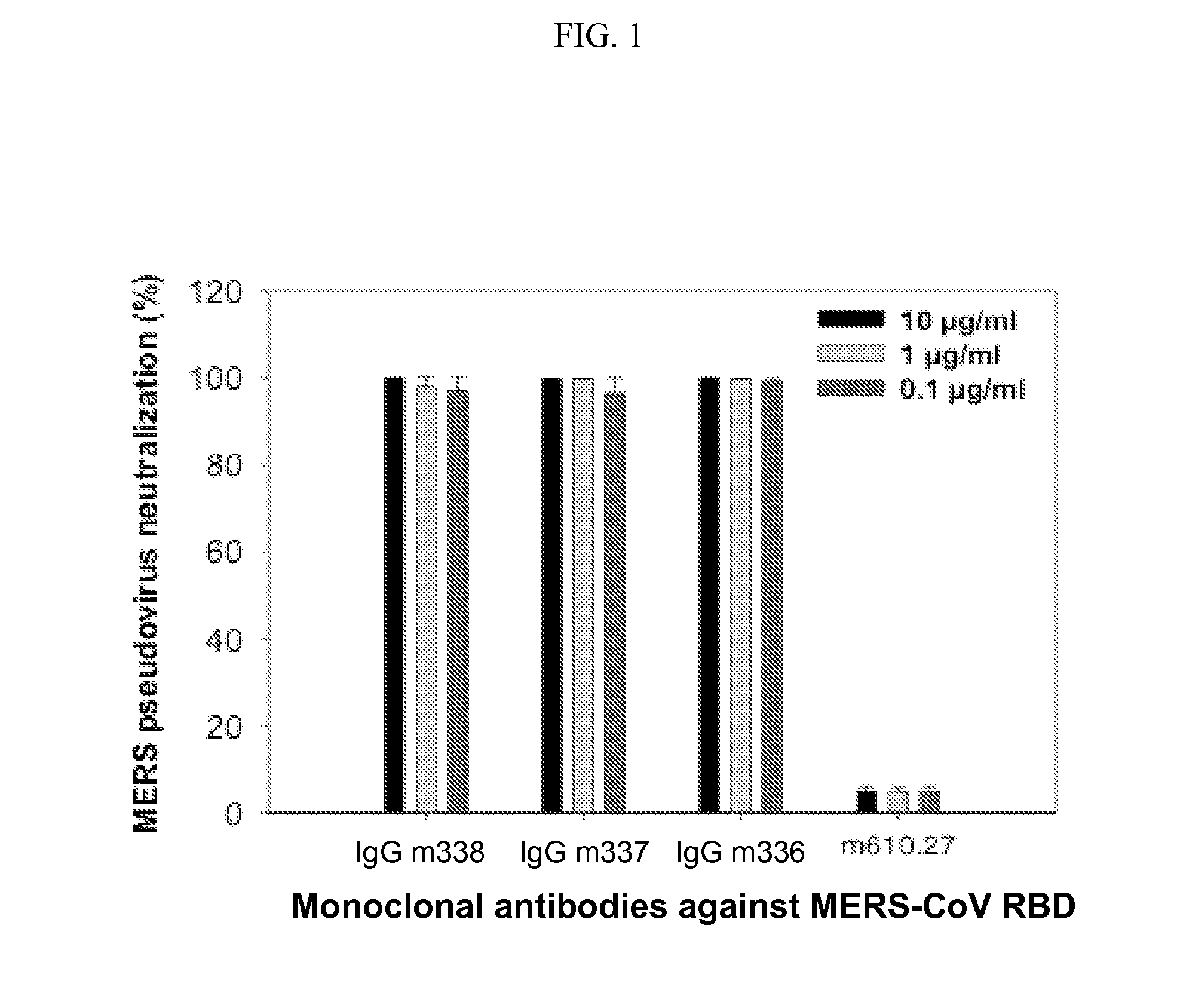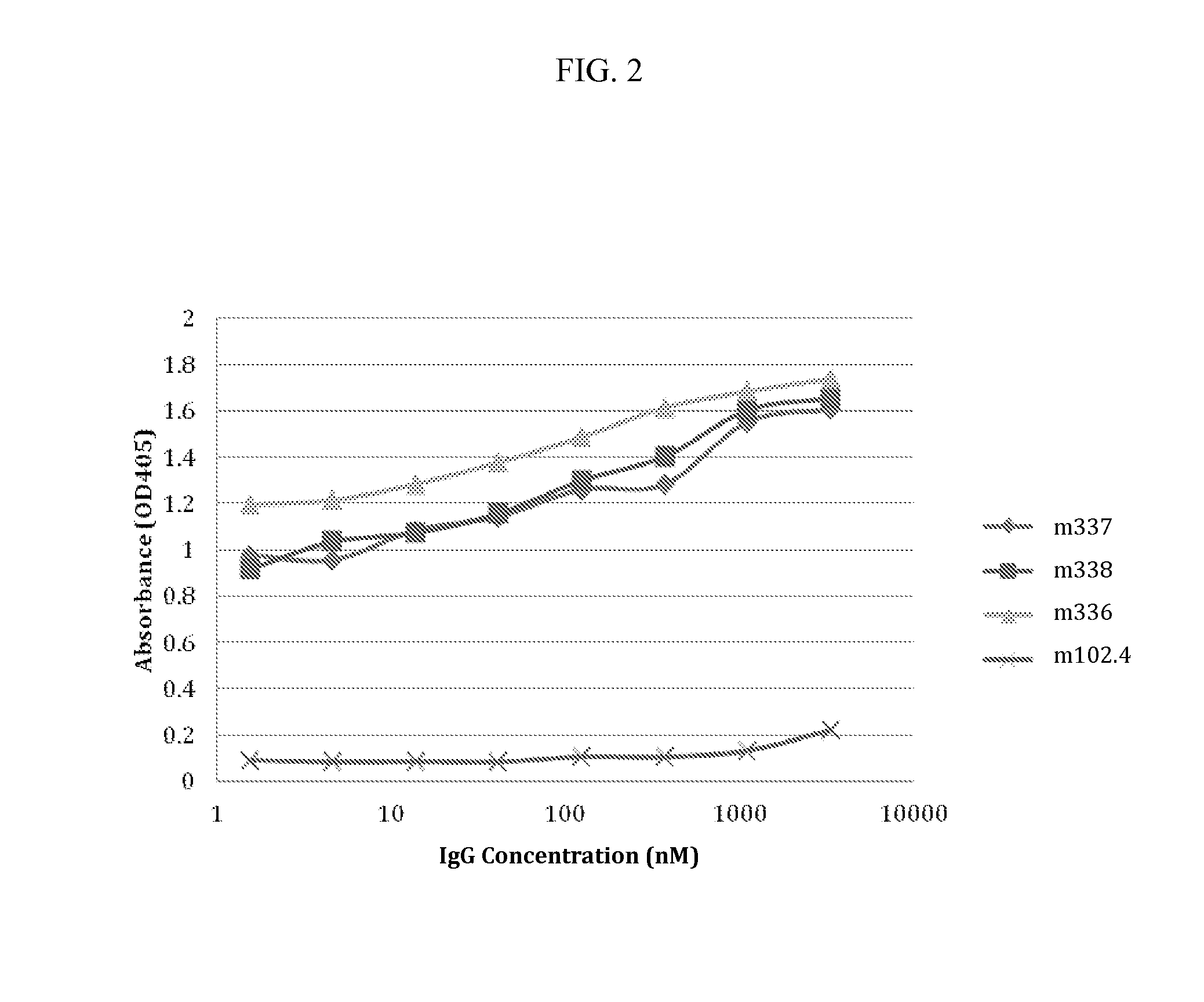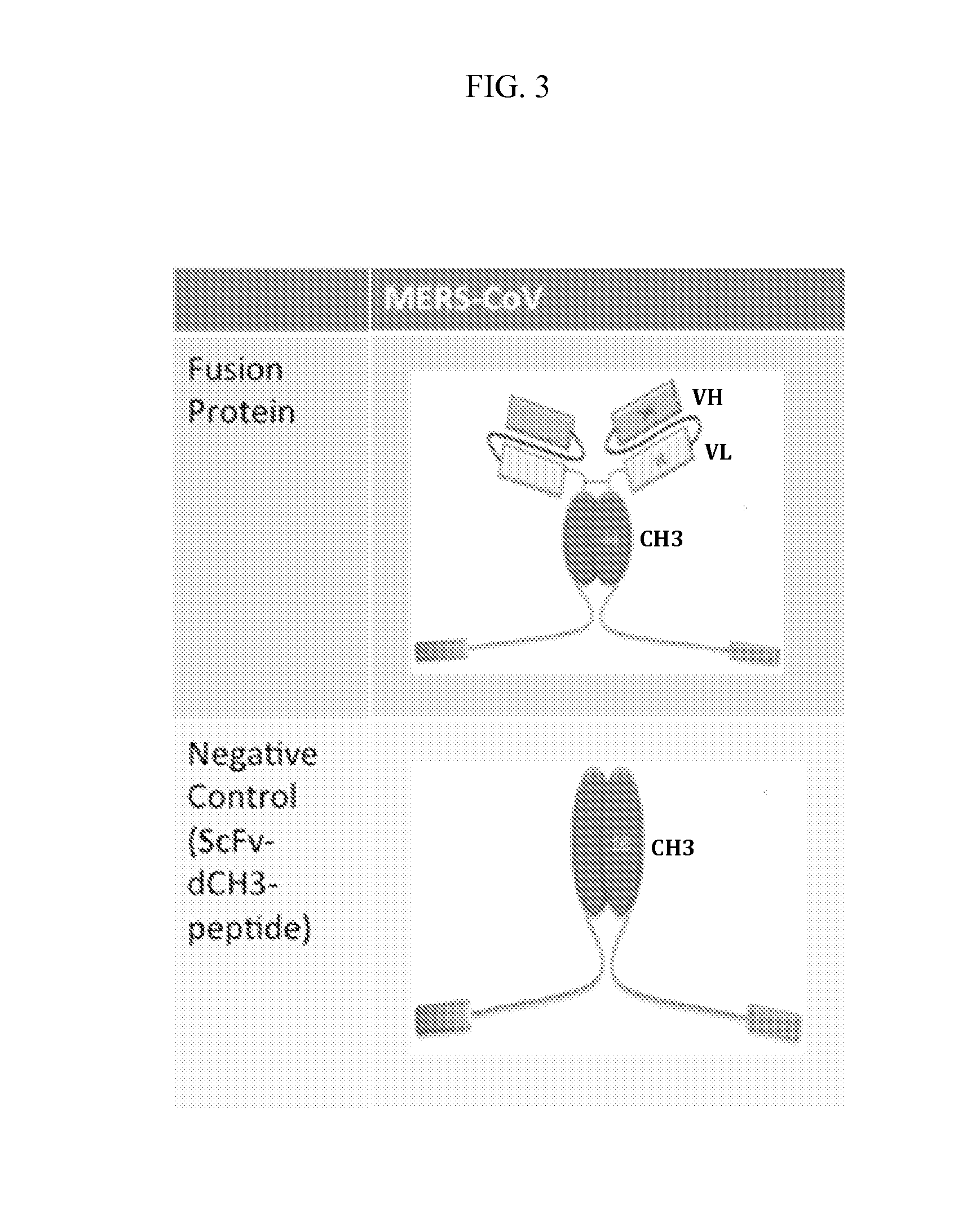Human monoclonal antibodies against the middle east respiratory syndrome coronavirus (mers-cov) and engineered bispecific fusions with inhibitory peptides
a technology of respiratory syndrome and human monoclonal antibodies, which is applied in the field of human monoclonal antibodies against the middle east respiratory syndrome coronavirus (merscov) and engineered bispecific fusions with inhibitory peptides, can solve the problems of human-to-human transmission, serious threat to public health, and high mortality of emerging viruses
- Summary
- Abstract
- Description
- Claims
- Application Information
AI Technical Summary
Benefits of technology
Problems solved by technology
Method used
Image
Examples
example 1
[0072]This example describes materials and methods for Examples 2 and 3.
[0073]Antibodies (Abs) and Other Proteins
[0074]The horseradish peroxidase (HRP)-conjugated anti-FLAG tag Ab and HRP-conjugated anti-human IgG (Fe-specific) Ab were purchased from Sigma-Aldrich (St. Louis) and anti-M13-HRP polyclonal Ab from Pharmacia (Piscataway, N.J.). The receptor binding domain (RBD) of MERS-CoV was expressed, purified, and characterized. The MERS-CoV Si glycoprotein was purchased from Sino Biological Inc.
[0075]Large Nave Human Antibody Library Construction
[0076]A large phage display library was constructed following published protocols for phage display (see Zhu et al., “Construction of a Large Nave Human Phage-Displayed Fab Library Through One-Step Cloning,” in Therapeutic Antibodies, Volume 525, pp 129-142 (2009)) using the PBMC cDNA from 30 healthy volunteers as a template for cloning the expressed Ab gene repertoire.
[0077]Panning of the Library against Antigens
[0078]The phages (5×1012 cf...
example 2
[0094]This example demonstrates the identification and characterization of antibodies against MERS-CoV.
[0095]MERS-CoV S RBD was used for panning of a large human antibody library. Several rounds of panning under increasingly stringent conditions resulted in significant enrichment by the third and fourth rounds of panning. Individual phage clones from the fourth round of panning were screened using monoclonal phage ELISA with the same antigens used for panning. Panels of binders that exhibited the highest binding were selected for further characterization.
[0096]The phage-displayed Fabs were expressed as soluble Fabs and their binding to the corresponding antigens evaluated in an ELISA binding assay. Binding curves for the Fabs were derived by plotting optical density at 405 nm (OD405) values against Fab concentrations. The 50% binding in ELISA (EC50) was in the range from 10 nM to 100 nM. The Fabs with the lowest EC50s, three Fabs specific for the MERS-CoV RBD (Fab m336, Fab m337, Fa...
example 3
[0101]This example demonstrates the production of bispecific antibodies against MERS-CoV.
[0102] Bispecific antibody-based molecules were designed to increase the potency and breadth of neutralization and decrease the probability for development of resistance. The bispecific molecules are fusion proteins of a mAb against the spike glycoprotein (S) (e.g., an scFv) linked to an inhibitory peptide that binds to membrane fusion intermediates.
[0103]Virus entry into cells occurs in two major pathways: the endocytic and no-endocytic routes. The endocytic route includes clathrin-mediated endocytosis and penetration (e.g., adenoviruses, influenza, and other viruses fuse within the cell after endocytosis). The non-endocytic route includes fusion at the cell surface (e.g., HIV, coronaviruses, and other viruses fuse mostly at the cell surface).
[0104]For MERS-CoV, virus entry into cells is mediated by spike glycoprotein (S). The RBD on S mediates the attachment of the virus to its cellular recept...
PUM
| Property | Measurement | Unit |
|---|---|---|
| concentrations | aaaaa | aaaaa |
| concentrations | aaaaa | aaaaa |
| concentrations | aaaaa | aaaaa |
Abstract
Description
Claims
Application Information
 Login to View More
Login to View More - R&D
- Intellectual Property
- Life Sciences
- Materials
- Tech Scout
- Unparalleled Data Quality
- Higher Quality Content
- 60% Fewer Hallucinations
Browse by: Latest US Patents, China's latest patents, Technical Efficacy Thesaurus, Application Domain, Technology Topic, Popular Technical Reports.
© 2025 PatSnap. All rights reserved.Legal|Privacy policy|Modern Slavery Act Transparency Statement|Sitemap|About US| Contact US: help@patsnap.com



